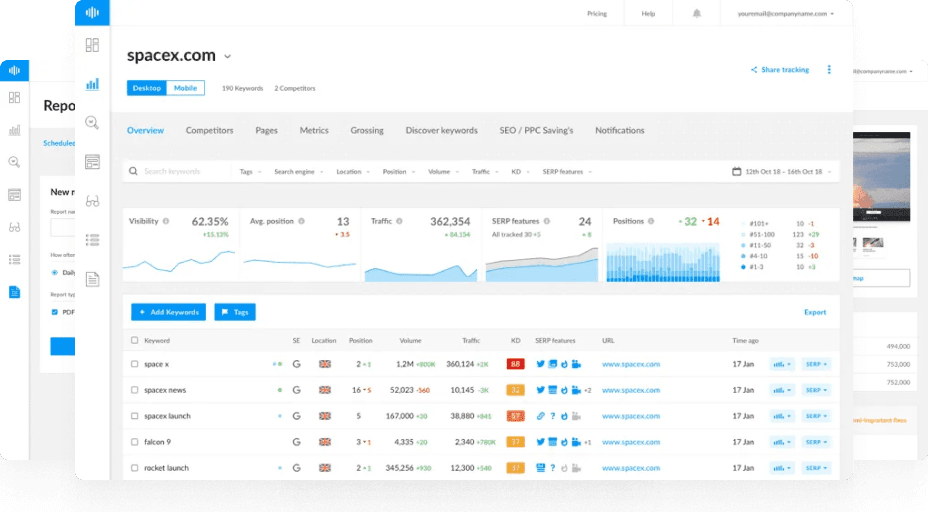What is Answer Engine Optimization (AEO)?
Answer Engine Optimization (AEO) is the process of optimizing content to be discovered, cited, or summarized by AI-driven answer engines — such as Google’s AI Overviews, Bing Copilot, Perplexity, ChatGPT, and other generative models that synthesize answers directly from multiple web sources.
Unlike traditional SEO, which focuses on ranking web pages in the top 10 blue links, AEO aims to ensure your content is understood, referenced, and trusted by large language models (LLMs) and retrieval-based AI systems that generate responses within the search interface itself.
AEO represents the next evolution of SEO in an AI-first search environment — where searchers get summarized, conversational results rather than lists of URLs.
How Does Answer Engine Optimization Work?
Answer engines combine retrieval, generation, and citation to create synthesized responses for users. AEO ensures your content is both discoverable and eligible for these systems to use.
The process typically involves:
- Retrieval: The AI scans indexed and crawlable content from trusted web sources.
- Understanding: It identifies entities, context, and relationships using embeddings and structured data.
- Generation: A model such as Gemini, GPT-4, or Claude 3 generates a synthesized answer.
- Attribution: The model cites or links back to authoritative sources to provide transparency.
AEO, therefore, is about optimizing your site so AI systems recognize it as an authoritative, factual, and contextually rich source worth citing.
Why Is AEO Important?
Answer engines are rapidly transforming how users interact with search results. With zero-click searches on the rise, visibility now extends beyond ranking to representation inside AI answers.
1. Shift from Ranking to Referencing
Being referenced or cited inside an AI summary can deliver traffic, brand exposure, and credibility — even without a top 10 ranking.
2. Search Ecosystem Transformation
As Google, Bing, and others integrate LLMs, the SERP becomes answer-first rather than link-first. Businesses must adapt to maintain discoverability.
3. Reinforced E-E-A-T Importance
Models rely heavily on trust signals, author expertise, and consistent entity data when choosing which sources to include in answers.
4. Emerging Metrics
Traditional KPIs (like CTR and position) are being replaced by new indicators such as citation frequency, mention visibility, and answer inclusion rate.
How to Optimize for Answer Engines
1. Structure Content for Direct Answers
Write clear, concise, factual paragraphs that can easily be extracted or summarized by AI systems. Use question-based subheadings (H2, H3) to match user intent.
2. Enhance Entity Clarity
Ensure all people, organizations, and topics are clearly defined using consistent names, schema markup, and linked entities (e.g., Wikidata, Google’s Knowledge Graph).
3. Use Structured Data
Implement schema types like FAQPage, HowTo, Article, and Product. Structured data helps AI engines understand your content’s context and purpose.
4. Demonstrate E-E-A-T
Highlight credentials, cite reputable sources, and use author bios or organization pages that establish expertise and trustworthiness.
5. Maintain a Clean Crawl Structure
Ensure your site’s most valuable content is crawlable and indexed. Avoid render-blocking scripts or fragmented single-page apps that hide content from crawlers.
6. Monitor AI Citations
Track whether AI Overviews or third-party answer engines reference your brand or content. Use tools like Ranktracker’s SERP Checker to analyze evolving AI-powered result sets.
7. Write for Conversational Queries
Include long-tail, natural-language questions and answers that match how people speak — not just how they type. Example:
Instead of “SEO tools benefits,” write “What are the benefits of using SEO tools?”
AEO vs Traditional SEO
| Feature | Traditional SEO | Answer Engine Optimization (AEO) |
|---|---|---|
| Primary Goal | Rank higher in SERPs | Be cited or referenced in AI summaries |
| Focus | Keywords & backlinks | Entities, context, structured data |
| Ranking Model | Algorithmic ranking | Generative reasoning & retrieval |
| Success Metrics | CTR, position, impressions | Citations, mentions, visibility in AI answers |
| Search Format | 10 blue links | Conversational, summarized results |
Tools to Support AEO
- Ranktracker SERP Checker: Monitor AI-integrated SERP layouts and discover where AI summaries appear.
- Ranktracker Web Audit: Ensure your structured data and technical SEO meet indexability standards.
- Keyword Finder: Identify long-tail, question-based keywords ideal for AEO content.
- AI Article Writer: Create optimized content designed for clarity, accuracy, and semantic depth.
The Future of AEO
As AI-driven discovery continues to expand, AEO will become a core layer of digital visibility.
Success will depend on:
- Writing content that is clear, factual, and attributable.
- Structuring data so models can parse and reference it.
- Building strong brand entities across multiple knowledge systems (Google, Wikidata, schema.org).
Ultimately, AEO bridges the gap between SEO and AI, helping businesses remain visible in an era where the answers themselves — not just links — define discoverability.
Summary
Answer Engine Optimization ensures your content isn’t just found — it’s understood, cited, and trusted by the AI systems shaping modern search. As search evolves from keywords to context, mastering AEO is critical for maintaining visibility in the new generation of generative, answer-driven engines.
